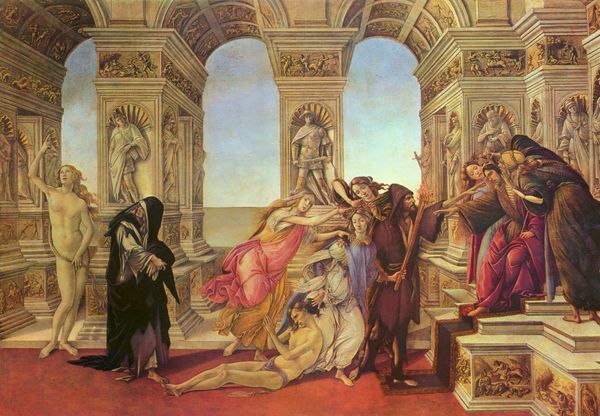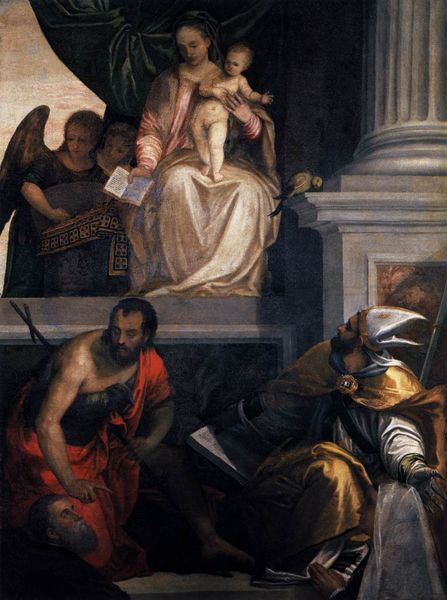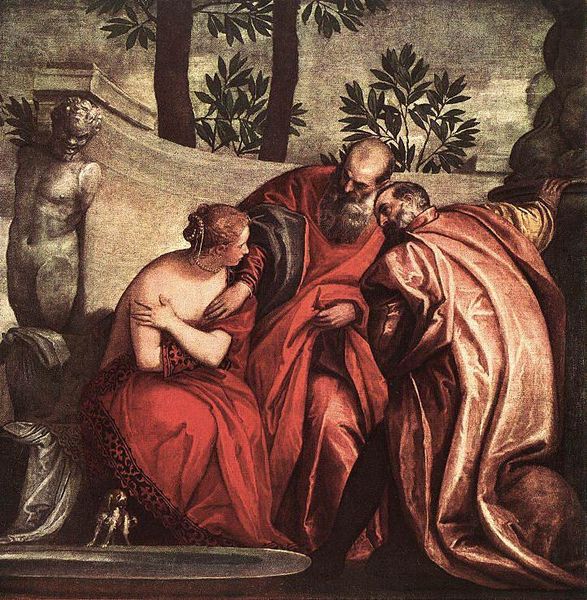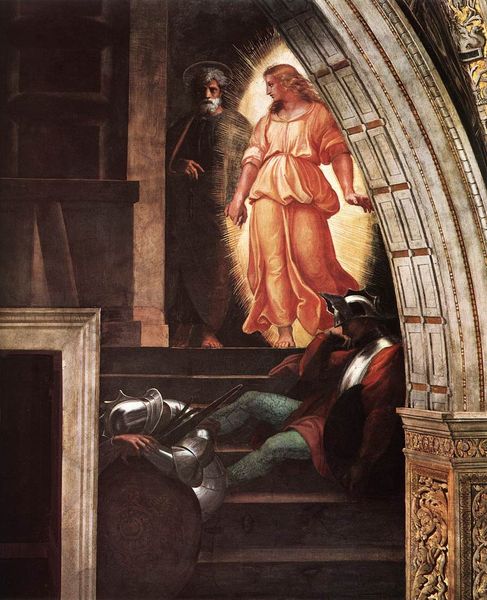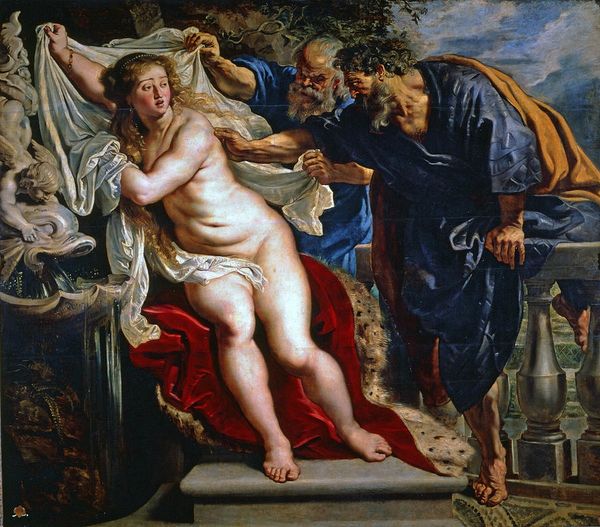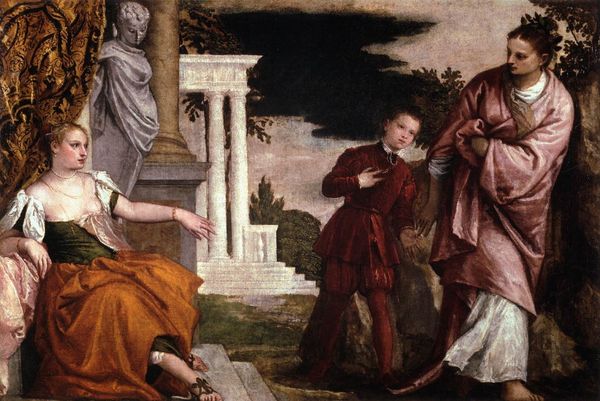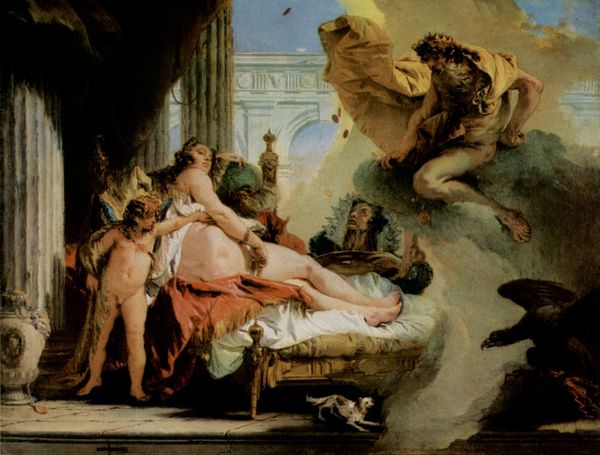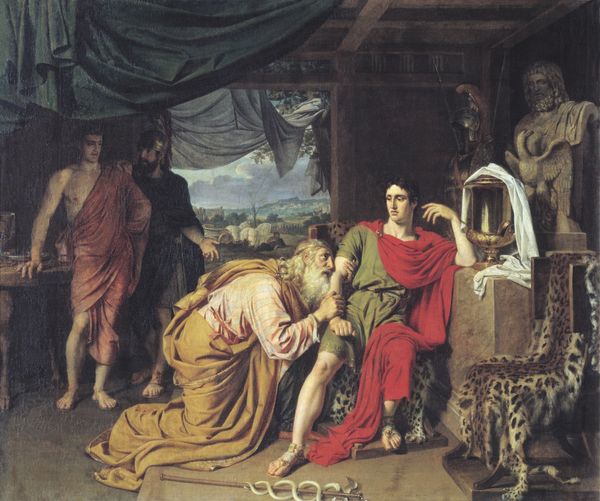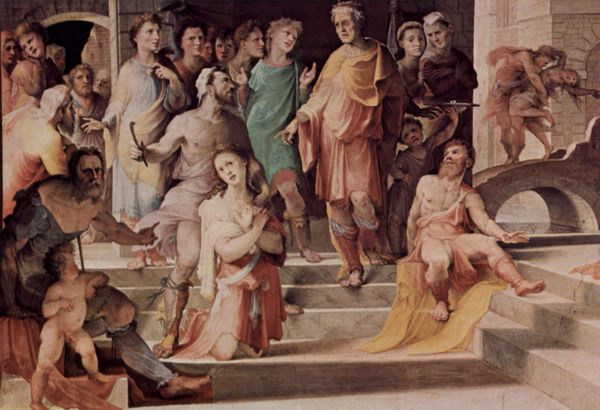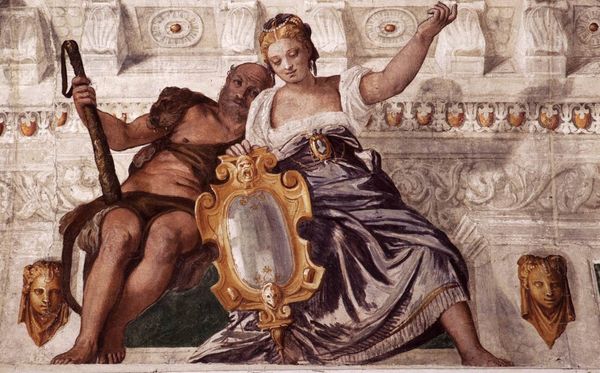
painting, oil-paint
#
portrait
#
high-renaissance
#
venetian-painting
#
narrative-art
#
painting
#
oil-paint
#
figuration
#
oil painting
#
christianity
#
mythology
#
facial portrait
#
surrealist
#
italian-renaissance
#
portrait art
Dimensions: 224 x 191 cm
Copyright: Public domain
Editor: Here we have Paolo Veronese's "Bathsheba Bathing," painted around 1575. The oil paint is applied in a way that creates rich fabrics and an opulent scene. What really strikes me is the gaze between Bathsheba and David; there's so much tension. How do you interpret this work? Curator: This piece encapsulates the power dynamics inherent in the story of Bathsheba, filtered through a male gaze prevalent in Renaissance art. We must consider the social context of 16th-century Venice and Veronese’s patrons. The painting, seemingly a beautiful biblical scene, arguably reinforces patriarchal structures. Editor: How so? Curator: By showcasing Bathsheba's beauty, it simultaneously blames her for David’s desire and absolves him of his abuse of power. Where is the consideration of her consent or agency in this depiction? Notice how the artist uses light to emphasize her body, essentially turning her into an object of visual consumption. What do you think about the composition? Editor: It does seem unbalanced, as if her perspective isn't really accounted for, while David's power is amplified through his stature. Also, I didn’t initially think of the historical Venice as part of this dynamic. Curator: Exactly. The inclusion of contemporary architectural details and luxurious fabrics was no accident; Veronese uses familiar cues of wealth and status to normalize a problematic narrative. In looking at works such as these, we can better interrogate historical power structures and, most importantly, our present biases. Editor: This has given me a totally different lens through which to see not just this piece but the period in general. Curator: Yes, examining these historical depictions critically can allow us to reflect on and challenge harmful gender dynamics.
Comments
No comments
Be the first to comment and join the conversation on the ultimate creative platform.
